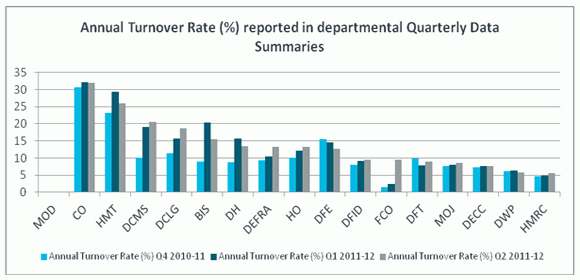Government reshuffles
David Cameron has, so far, avoided a major reshuffle of his ministers. But he is presiding over unprecedented churn in the civil service ranks.
David Cameron has, so far, avoided a major reshuffle of his ministers. But he is presiding over unprecedented churn in the civil service ranks.
There is a lot of change in Whitehall. The parting of the old guard means that over half of the permanent secretaries in charge of departments were not in post before the election. The civil service has a new and differently organised leadership (though the merger of the Permanent Secretary at No.10 post with the Cabinet Secretary means there is more continuity than first appears). At the next rung down, the prime minister’s top foreign affairs team has just changed completely: he has his second National Security Adviser since the election, a post that did not exist before, a new EU/global affairs adviser and a permanent replacement for Alex Allan as Chair of the Joint Intelligence Committee has yet to be announced. It is difficult to get a real handle on the extent of churn below the top. Our latest Whitehall Monitor tracks figures from departments – but that only looks at people moving in and out of departments. But it shows enormous turnover at the centre with the Cabinet Office and the Treasury leading the way in losing people with turnover rates of 25-30%.

This is less unexpected in the Cabinet Office, where many staff come in from departments for a tour of duty. Both departments pay well below the Whitehall average and have a real retention problem as people move to posts elsewhere – both in the civil service and beyond. The most recent staff survey, reported in the Financial Times, suggests that 10% of Treasury people are looking to leave the department as soon as possible and only 12% think their pay is reasonable. Some simple stories paint a picture of the degree of change that lies behind the big numbers:
- The longest serving member of the top team at Communities and Local Government joined the departmental board just before the election. Everyone else has been there less time than the Ministers
- The permanent secretary and three top DG roles in the Department for Education are filled by people “acting up” as the top team departed en masse before Christmas
- The Cabinet Office work on “open public services” has been the responsibility of four deputy directors since the election; and the government is already on its third chief information officer
- At a recent meeting of the Public Chairs Forum, a chair complained that he had five different “senior sponsors” since the election – with the minister providing the only continuity.
And change is not over yet. Department of Health is undergoing a complete restructure of its top team – with three new DG jobs out for open competition. Defra is about to reorganise its top structure at DG and director level, with all deputy directors being required to reapply for jobs. In many cases these are inevitable consequences of taking out large chunks of administrative spend – there are far fewer people around to do the same jobs. Ministers have always complained about too much change in the civil service; with people not staying in post long enough to see policies through. The need to make unprecedented cuts in administrative budgets was bound to necessitate more churn than usual. But the government will only succeed in seeing its longer term change plans through if it manages to retain and motivate good people to weather the current turbulence and stick with it.
- Topic
- Brexit
- Publisher
- Institute for Government